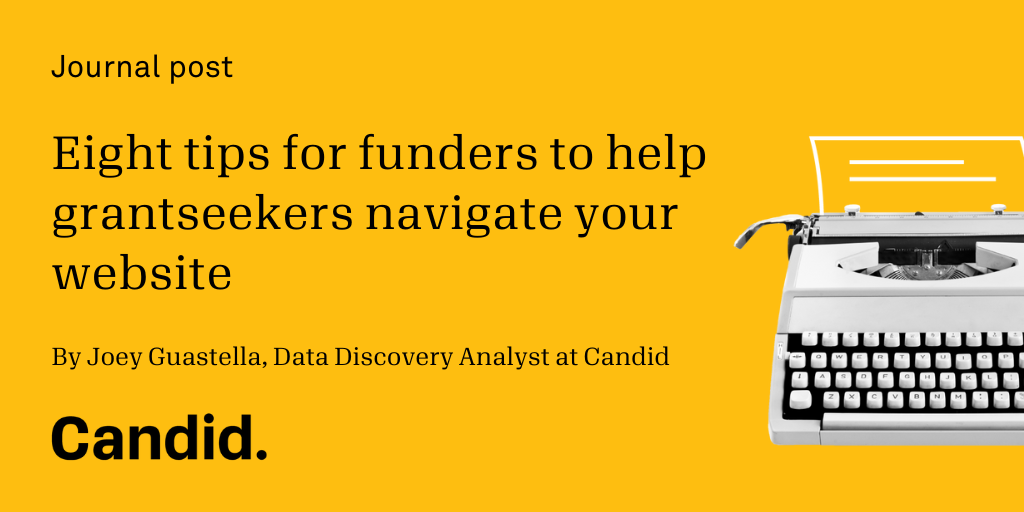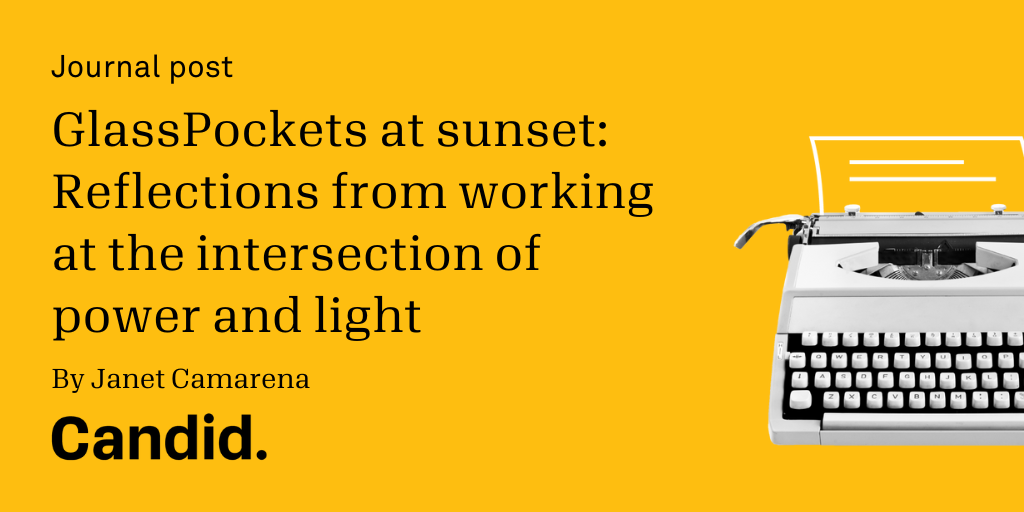How “Going Public” Improves Evaluations
Edward Pauly is director of research and evaluation at The Wallace Foundation. This post is part of the Glasspockets #OpenForGood series in partnership with the Fund for Shared Insight. The series explores new research and tools, promising practices, and inspiring examples showing how some foundations are opening up the knowledge that they are learning for the benefit of the larger philanthropic sector. Contribute your comments on each post and share the series using #OpenForGood.
As foundations strive to be #OpenForGood and share key lessons from their grantees' work, a frequent question that arises is how foundations can balance the value of openness with concerns about potential risks.
Concerns about risk are particularly charged when it comes to evaluations. Those concerns include: possible reputational damage to grantees from a critical or less-than-positive evaluation; internal foundation staff disagreements with evaluators about the accomplishments and challenges of grantees they know well; and evaluators’ delays and complicated interpretations.
It therefore may seem counterintuitive to embrace – as The Wallace Foundation has – the idea of making evaluations public and distributing them widely. And one of the key reasons may be surprising: To get better and more useful evaluations.
The Wallace Foundation has found that high-quality evaluations – by which we mean independent, commissioned research that tackles questions that are important to the field – are often a powerful tool for improving policy and practice. We have also found that evaluations are notably improved in quality and utility by being publicly distributed.
Incentives for High Quality
A key reason is that the incentives of a public report for the author are aligned with quality in several ways:
- Evaluation research teams know that when their reports are public and widely distributed, they will be closely scrutinized and their reputation is on the line. Therefore, they do their highest quality work when it’s public. In our experience, non-public reports are more likely than public reports to be weak in data use, loose in their analysis, and even a bit sloppy in their writing. It is also noteworthy that some of the best evaluation teams insist on publishing their reports.
- Evaluators also recognize that they benefit from the visibility of their public reports because visibility brings them more research opportunities – but only if their work is excellent, accessible and useful.
- We see evaluators perk up when they focus on the audience their reports will reach. Gathering data and writing for a broad audience of practitioners and policymakers incentivizes evaluators to seek out and carefully consider the concerns of the audience: What information does the audience need in order to judge the value of the project being evaluated? What evidence will the intended audience find useful? How should the evaluation report be written so it will be accessible to the audience?
Making evaluations public is a classic case of a virtuous circle: public scrutiny creates incentives for high quality, accessibility and utility; high quality reports lead to expanded, engaged audiences – and the circle turns again, as large audiences use evaluation lessons to strengthen their own work, and demand more high-quality evaluations. To achieve these benefits, it’s obviously essential for grantmakers to communicate upfront and thoroughly with grantees about the goals of a public evaluation report -- goals of sharing lessons that can benefit the entire field, presented in a way that avoids any hint of punitive or harsh messaging.
“What is it that you don’t know, that if you knew it, would enable you to make important progress in your own work?”
Asking the Right Questions
A key difference between evaluations commissioned for internal use and evaluations designed to produce public reports for a broad audience lies in the questions they ask. Of course, for any evaluation or applied research project, a crucial precursor to success is getting the questions right. In many cases, internally-focused evaluations quite reasonably ask questions about the lessons for the foundation as a grantmaker. Evaluations for a broad audience of practitioners and policymakers, including the grantees themselves, typically ask a broader set of questions, often emphasizing lessons for the field on how an innovative program can be successfully implemented, what outcomes are likely, and what policies are likely to be supportive.
In shaping these efforts at Wallace as part of the overall design of initiatives, we have found that one of the most valuable initial steps is to ask field leaders: What is it that you don’t know, that if you knew it, would enable you to make important progress in your own work? This kind of listening can help a foundation get the questions right for an evaluation whose findings will be valued, and used, by field leaders and practitioners.
Knowledge at Work
For example, school district leaders interested in Wallace-supported “principal pipelines” that could help ensure a reliable supply of effective principals, wanted to know the costs of starting such pipelines and maintaining them over time. The result was a widely-used RAND report that we commissioned, “What It Takes to Operate and Maintain Principal Pipelines: Costs and Other Resources.” RAND found that costs are less than one half of 1% of districts’ expenditures; the report also explained what drives costs, and provided a very practical checklist of the components of a pipeline that readers can customize and adapt to meet their local needs.
Other examples that show how high-quality public evaluations can help grantees and the field include:
- “Getting to Work on Summer Learning” and “Learning from Summer” offer evidence-based guidance on how to put on effective summer learning programs.
- “Raising the Barre and Stretching the Canvas” along with its predecessor “Something to Say,” identify common practices of high-performing arts-focused afterschool programs and how they can be implemented in a broad-based youth-serving organization.
Being #OpenForGood does not happen overnight, and managing an evaluation planned for wide public distribution isn’t easy. The challenges start with getting the question right – and then selecting a high-performing evaluation team; allocating adequate resources for the evaluation; connecting the evaluators with grantees and obtaining relevant data; managing the inevitable and unpredictable bumps in the road; reviewing the draft report for accuracy and tone; allowing time for grantees to fact-check it; and preparing with grantees and the research team for the public release. Difficulties, like rocks on a path, crop up in each stage in the journey. Wallace has encountered all of these difficulties, and we don’t always navigate them successfully. (Delays are a persistent issue for us.)
Since we believe that the knowledge we produce is a public good, it follows that the payoff of publishing useful evaluation reports is worth it. Interest from the field is evidenced by 750,000 downloads last year from www.wallacefoundation.org, and a highly engaged public discourse about what works, what doesn’t, why, and how – rather than the silence that often greets many internally-focused evaluations.
--Edward Pauly



